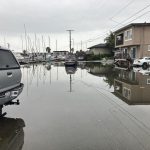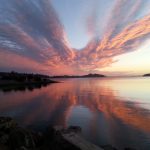San Rafael, CA 94901
Sea Level Rise Collaborative
The Canal Community Resilience Planning Project is a collaborative effort exploring the feasibility of different adaptation actions to address flooding risks.
The project partners, including The Canal Alliance, the County of Marin, the Multicultural Center of Marin, and researchers at the University of California Berkeley, are working together to understand the hazards facing our community, prioritize actions, build capacity, and provide STEM educational opportunities for students.
The project includes the entire physical area around the Canal (known as an “operational landscape unit”). However, we’re prioritizing engagement in the Canal neighborhood, which is the most vulnerable to sea level rise, to ensure equity in the process and outcomes.
Over the next year, we plan to work alongside residents to co-create ideas to improve our resilience. There’s no right answer, so this project will be a conversation with our community, especially those who are disproportionately vulnerable.
Do you have ideas? Want to stay in the loop? Please take the short survey below to add your voice to the project!
Learn more about the project
To learn more about the project, please watch our quick video summary and take our short survey.
Project Documents
On-going & Completed Adaptation Projects
What’s Been Done So Far
The City has worked for years with others in the Bay Area to support a future that is more resilient to the effects of climate change and disasters.
The City is a member of the Bay Area Climate Adaptation Network, the Marin Climate and Energy Partnership, the BayWAVE Executive Steering Committee, the Marin Wildfire JPA, Drawdown: Marin, and other collaborative efforts.
More about these efforts, studies, and projects is below.
How can I get updates?
To stay updated on the project, sign up for our newsletter below.
How can I get involved?
There are many opportunities to get involved. Sign up to our newsletter or contact us via email at kate.hagemann@cityofsanrafael.org!
The project has been generously supported by the Marin Community Foundation, California State Coastal Conservancy, and the Governor's Office of Planning and Research. 




